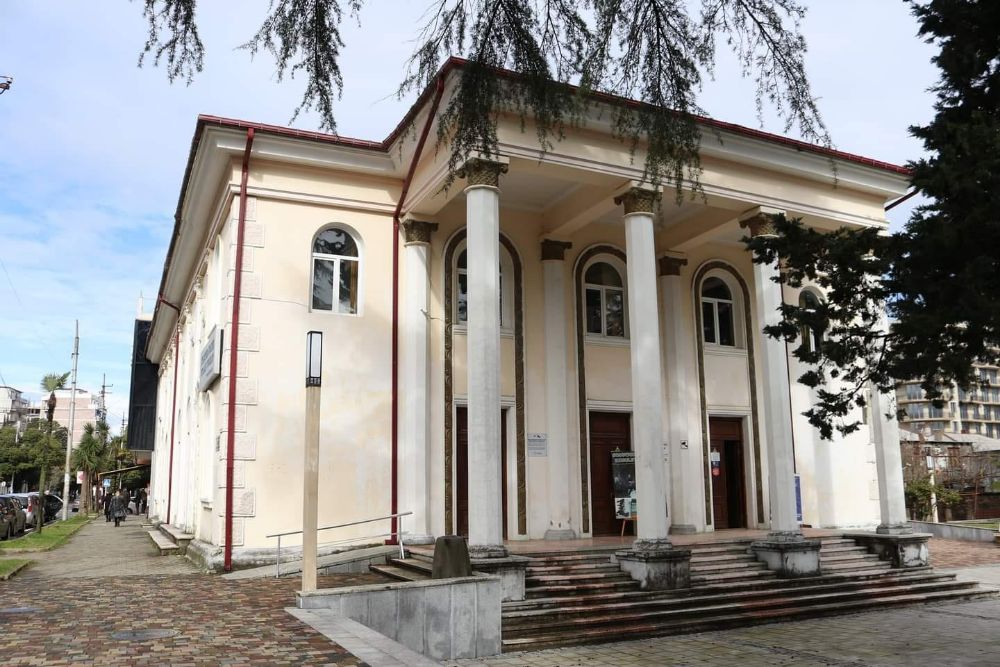
The local history museum in Kobuleti was created by the efforts of enthusiasts. It opened for visitors in 2012 and is located in a convenient place for tourists, in a beautiful building of a former cinema on David Agmashenebeli Avenue No. 100.
Coordinates: 41.818045 , 41.774576
Opening hours 10.00 – 18.00.
Day off Monday. With the decline of the tourist season, weekends become Saturday and Sunday.
Everything in the museum can be photographed! And most of the exhibits even touch.
The museum tells about the history of Kobuleti and its surroundings from ancient times to the times of socialism.
The museum has several expositions and each one is created with love for its national culture.
The exposition, dedicated to ancient times, introduces archaeological finds and is filled with artifacts, mainly found at the excavation site in the area of the Cholokha River.
The second exposition shows the life and way of life of the inhabitants of Adjara in pre-revolutionary times. Everything is here – clothes, utensils, weapons, tools, furniture.
Here you can see a model of a house on stilts, which were built in the swamps of Spain in the late Middle Ages. Next to the nalia house is a barn where food was stored and it is also on stilts. Many finds were found in the settlement of Pichvnari – translated from Georgian as “Place of pines”.
The third exposition tells about the Soviet period and reproduces the office of the first secretary of the party from the period of the 1970-1980s and you can see banners, typewriters, posters and many things from that era.
There is a chair here, on which sat a qadi – a judge. Georgia is depicted on a chair in the center, and scales are on the sides of it, which symbolizes justice.
The museum also features ebony works by local sculptor Vazha Verulidze. He created exhibits from the fragments of ancient trees of the Paleozoic era, which are well preserved and have survived to this day thanks to the famous Spani Swamps.
In the Kobuleti museum you can see paintings by the artist who painted the letters of the modern Georgian alphabet on asomtavruli – this is the most ancient type of Georgian writing. According to historical legends, it was created in the 3rd century BC and is distinguished by rounded shapes and the same size of letters.
In addition to the permanent exhibition, the museum has temporary exhibitions. For example, there was a photo exhibition of ancient manuscripts and various ancient written documents, where you could learn interesting facts. For example, that writing in the Kobuleti region used to be owned mainly by women, since they had time to master writing, while men were busy with wars.
At the entrance to the museum hangs a large stand. It shows tourist routes. On these routes you can go on excursions from the museum around the outskirts of Kobuleti with a guide Levan. According to numerous reviews of travelers, Levan is an easy and pleasant conversationalist, and besides, he is a sensitive driver, with whom almost no one gets sick.
A visit to the museum in Kobuleti is a pleasant and useful pastime, with interesting photos for memory.
Website: https://kobmuzeu.ge

